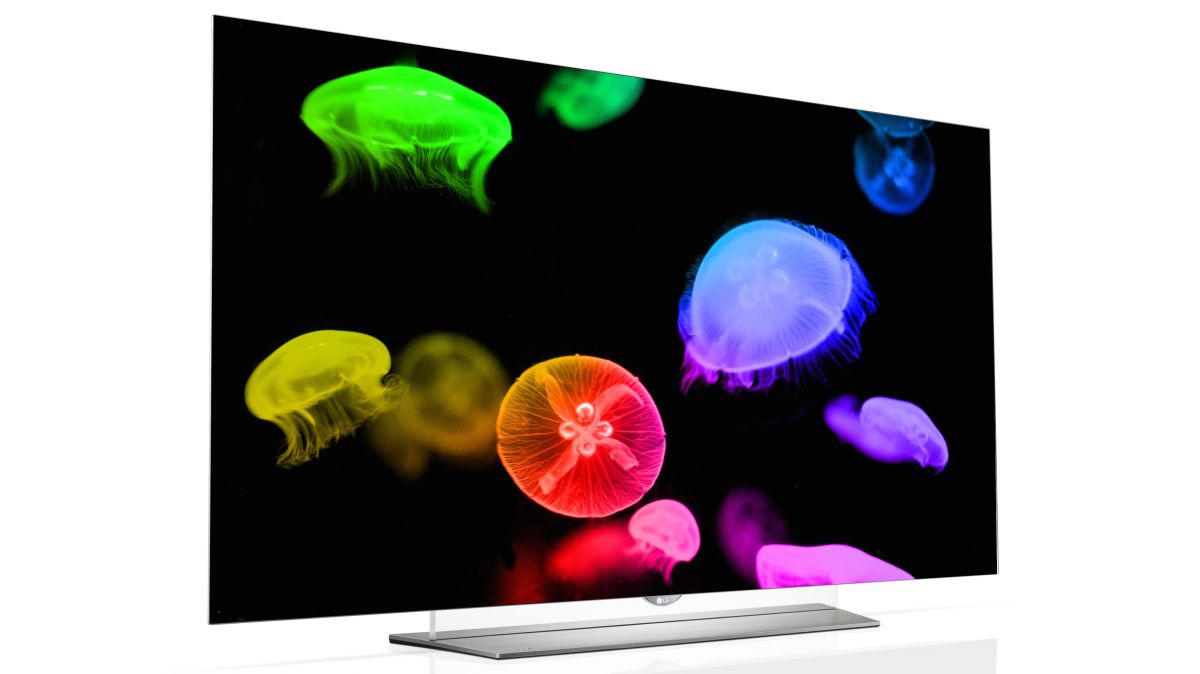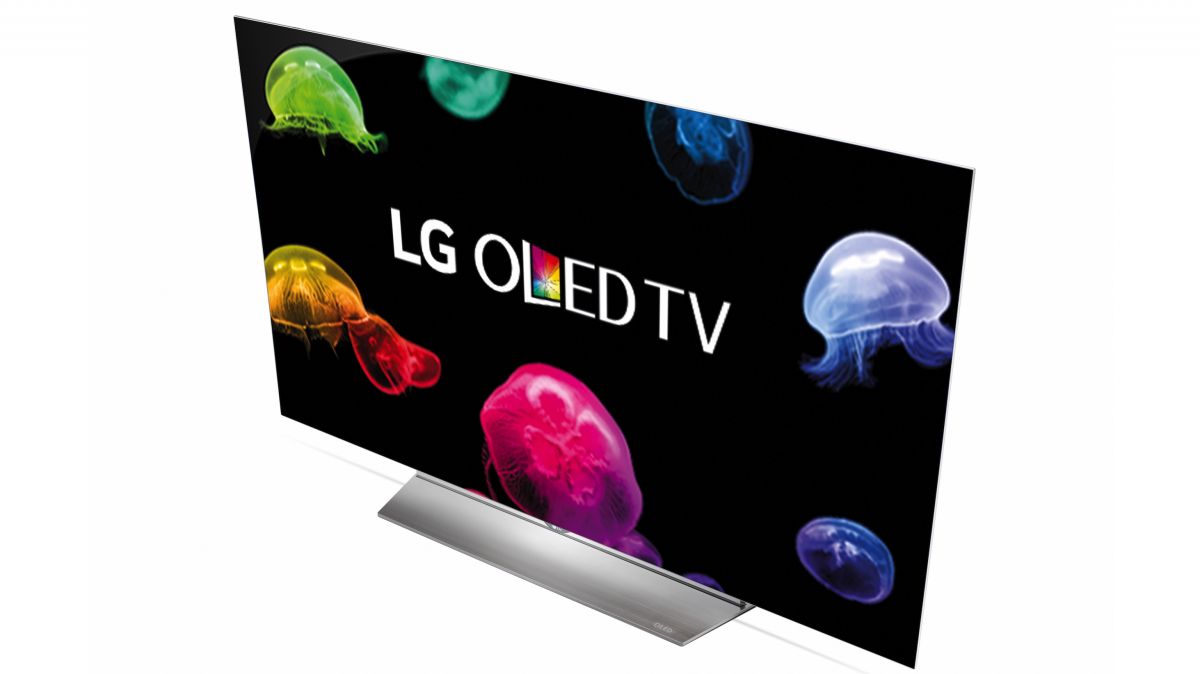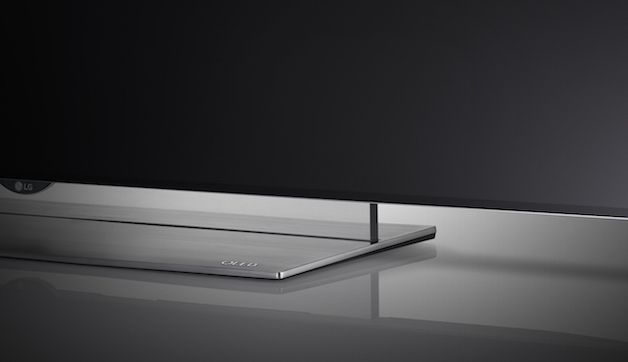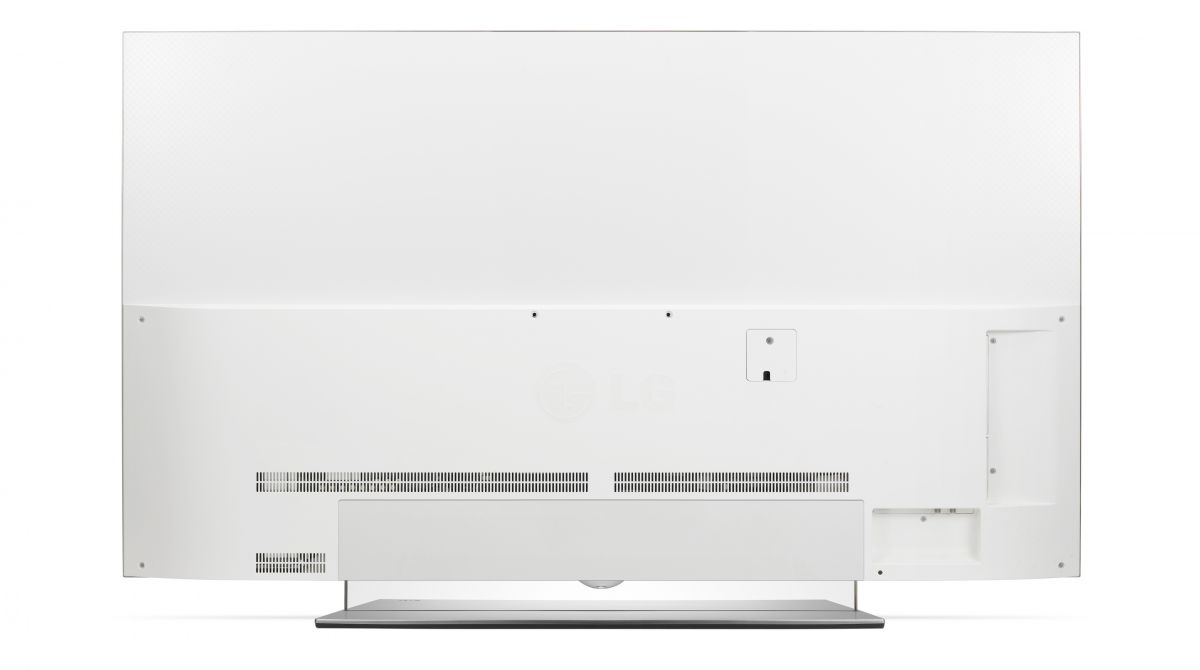
Introduction and design
LG has been paving its own way forward with OLED televisions. While Samsung joined the party briefly when the first generation was released back in 2013, since then only LG has released new models with anything resembling regularity.
While those OLED panels have been almost universally well-received, they have all been curved – launching with a concave design that is meant to mirror the human eye’s natural shape, but ultimately doing little more than reducing the viewing angle for many rooms.
But the 65EF950T (and the 55-inch 55EF950T) has finally reworked the OLED TV design and brought it back to the standard flat panel the world knows and loves, and the end result is comfortably one of the best televisions ever released.
You’ll pay for that quality though. The 65-inch model has an RRP of $8,999, while the smaller 55-inch model will set you back $5,499.
Interestingly though, those are the exact same price points as the curved 65EF960T and 55EF960T that were launched last year, meaning there’s no discernable difference in cost between flat and curved, although the flat panel will also support HDR content (if you can find some).

LG has managed to cram a whole heap of tech into the fairly thin television. The lower half of the back of the TV is significantly thicker than the top half (though probably still thinner than your old plasma), and houses all the tech that makes this thing work.
There’s a quad-core processor, which runs the WebOS user interface and handles the 4K upscaling, plus Harman/Kardon designed stereo speakers, coupled with 3 HDMI 2.0(a) ports, 2 USB 2.0 and a single USB 3.0 port on the side.
The inclusion of HDMI 2.0(a) ports is important, as you need it to show off HDR content from an external source (like a 4K Blu-ray player, when they launch out here). The curved OLED panels can display HDR content from a streaming service, but the fact their HDMI ports aren’t up to the 2.0(a) standard means that you won’t get the HDR benefit from a 4K blu-ray player if you picked one up.
Also thrown in there is 802.11n Wi-Fi, a single tuner, and FreeView Plus support for access to HbbTV content.
And for those who enjoy 3D on their home televisions, the EF950T also supports passive 3D, with a couple of pairs of glasses in the box.
Picture quality
For the longest time, OLED seemed to be the Holy Grail of TV technology, promising an infinite contrast ratio capable of displaying blacks as perfectly black thanks to the fact that each individual pixel lights itself, rather than requiring a backlight like traditional LCD panels.
Now that the technology has been available for a few years, it’s abundantly clear it’s definitely up to the challenge of big screen TV duties. The fact that there’s a massive 3840 x 2160 pixel resolution on board only amplifies just how good images look on this telly.
The catch with a native 4K resolution though is getting your hands on 4K content. For that, the first access point is Netflix, at least until 4K Blu-rays hit the market.

This, my friends, is where the 4K OLED TV shines. Powering up that amazing one-shot fight scene at the end of episode 2 of Daredevil season 1, there’s a new depth to the gritty darkness of the scene. The grungy hallway is given more life – the yellow/green tinge of the fluorescent lights feels dirtier, the contrast between Murdock’s all-black suit and the dilapidation of the walls is given new life.
Seriously, watching this scene in 4K on the OLED panel was brutal, in the best possible way.
It was a similar situation powering up Jessica Jones. Watching the title character of Marvel’s second Netflix show hidden in the shadows taking photos of Luke Cage in the first episode added a level of immersiveness to the scene.
Even throwing on the first episode of Fuller House, the reboot of the popular 90s sitcom, showed just how good 4K content looks on a 4K panel. Though the sets are much brighter (and simpler) than those of the Marvel shows, the picture quality of the OLED isn’t diminished at all. If nothing else it was a great showcase of just how good colour reproduction is on the LG TV.
As a point of comparison, LG provided us with some original 4K content that was simultaneously broadcast to both the OLED and a curved 4K LCD at the same time. The difference in contrast was truly impressive – blacks on the LCD model looked more grey than anything else, which contributed to a sense of washed out colours.
On its own though, that LCD 4K panel looked brilliant, which is a testament to just how good the OLED display is.
When it comes to non-4K content on the LG TV, we did get a little bit of a mixed reaction. Over the course of our review, I threw on Blu-ray editions of Terminator: Genysis, Jurassic Park and Watchmen.
While the upscaling of the more recent films looked impressive, with smooth tracking and impressive colour reproduction, the darker scenes in Jurassic Park had a noisy quality to them, something that I couldn’t reproduce on a traditional LCD 4K display.
There was no indication of this noise in either of the other upscaled movies, despite being played back through the same Blu-ray player, so it did seem odd.

Motion tracking was impressive. There was a little bit of noise around the super-fast movements, but with LG’s TruMotion switched to Clear Mode, the effect was minimal, and the end result was pretty good.
The other important update to the picture quality of the flat 4K OLED panel is support for HDR content. Unfortunately, finding HDR content at the moment is nigh on impossible. LG did supply us with a few short clips to test the functionality, and the end results are pretty amazing.
Perhaps the best scene offered to showcase HDR was a shot of a woman, barely lit by a campfire, standing below a sea of stars. The footage somehow managed to capture the blackness of the sky, intermittently pin-pricked with stars, and yet still captured the detail of the actress’ face.
The thing about the HDR footage was that you could see more in every frame. Not that you really notice that you see more, but the depth of the video is greater than non-HDR footage, which gives a very immersive feel.
That said, the HDR footage I got to test was very stylised, particularly chosen to showcase what the technology could do. It will be interesting to see HDR actually appear in movies and TV shows on services like Netflix, as that will give a more realistic interpretation.
The second season of Daredevil on Netflix will be the first real taste we get of HDR content, so we’ll be anxiously waiting to see how that improves the performance of an already exceptional TV.
And that was the real disappointment of the HDR demo – that there wasn’t any real content to test it out. Even 4K content was a bit hard to come by – While YouTube and Netflix both offer 4K channels, the selection is still a bit limited, especially when it comes to movies. Not that we can really blame LG for that though…
Usability, sound and value
LG’s decision to buy the old Palm WebOS operating system to power its Smart TV UI continues to pay off. Using the OLED’s Wiimote-like remote, navigating between apps is both simple, and responsive.
There’s a solid selection of local apps on offer. While Netflix will probably remain front and centre thanks to its 4K content selection, there’s also apps for Stan, ABC iview, SBS On Demand, YouTube and BigPond Movies. Google users can also enjoy Google Play Movies and music lovers will appreciate Spotify and Deezer apps.
In fact, a quick count shows 128 apps and games available for download, including apps like GoPro, WWE and UFC channels.
The remote control is a fairly versatile little device. With a tracking cursor that works just like the Nintendo Wii’s controller, you can easily point to the content option you want to select and navigate that way, rather than a traditional cross cursor.

There’s also an integrated microphone for voice controlling the television. By pressing a button and talking to remote, you can switch between apps and control the TV – within reason.
The problem with voice control is that it seems to revert to YouTube for results. If you voice search for “Watch Daredevil on Netflix,” the results are a heap of Daredevil trailers on YouTube. And once you’ve watched those, you’ll remember that that isn’t actually what you searched for.
Still, while the voice control doesn’t seem as robust as it is on the new Apple TV, it certainly doesn’t hurt the LG’s performance.
Sound
LG has worked with Harman/Kardon for its integrated speakers, and the results are perfectly decent.
To be honest, if you’re dropping almost $9K on a 65-inch panel, you probably want to invest in a proper surround sound solution (or at the very least a soundbar), but if that’s not a possibility, the integrated speakers do a pretty solid job.
At high volumes, you’ll notice the low end missing from your explosions and fist impacts, but it’s not awful – the sound is actually very well balanced, and doesn’t distort even at maximum volume.
Value
When it comes down to it, the biggest challenge this television has is the same challenge the last few OLED panels have had – they’re expensive.
At $8,999 for 65 inches, it’s definitely resting at the top end of the spectrum in terms of cost. Arguably, it does produce the best picture you can currently buy, but the tradeoff between much, much cheaper LCD screens and quality doesn’t necessarily add up in OLED’s favour.
Is the price tag worth it? Well, if you want the best, then this is the best – and ultimately it’s only going to get better as your access to 4K and HDR content gets better.
But if budget is a concern, then you can get a similarly specced 4K LCD set for less than half the price, and that difference is probably going to be too big to ignore for many people.
Verdict
There’s absolutely no question in my mind that this is the best television your money can buy right now. Impeccable image quality, blindingly good contrast ratio and support for upcoming HDR content, the LG 65EF950T Flat 4K OLED TV sets a new benchmark for televisions.
It’s expensive – make no mistake, this TV is going to hurt your credit card balance – but if you can afford it, you will end up with a TV capable of changing the way you consume entertainment.
We Liked
There’s something spectacular about flicking on a movie in a dark room, and not being able to tell that there are black bars above and below the picture because the pixels aren’t being backlit against their will.
Throwing on some 4K content delivers such a rich, immersive experience that you almost forget you’re watching television. But normal Full HD content also benefits from the experience as well, with LG’s upscaling making visually impressive films like Watchmen even more watchable on the OLED TV.
HDR content is lacking, but our initial impressions of the sample footage we saw promises big things, and also allows the television to be future-proofed for the arrival of the 4K blu-ray standard when it arrives in Australia later this year.
LG’s WebOS continues to perform well, especially with the bundled magic remote, and LG’s app store offers a solid collection of local streaming apps, allowing you to get the most from your television itself.
And finally, finally, this is a flat-panel OLED. The decision to launch OLED with curved screens may have intrigued many, but the simple fact this TV doesn’t create a sweet-spot for viewing makes it superior to the last model in a big way.
We Disliked
The big challenge this television faces, aside from the price, is that it’s almost over-specced for the content that is currently available. Even browsing through Netflix’s 4K library shows serious gaps – the only films on offer to stream are Adam Sandler’s Ridiculous Six, the Crouching Tiger, Hidden Dragon sequel Sword of Destiny and the 1997 Matthew Broderick Godzilla film.
Of course, that’s hardly LG’s fault, but it’s an issue that’s amplified when you consider the HDR support on board and the lack of HDR content on offer.
Aside from that, there’s not much to complain about with this television. There were some strange artifacts when watching an old Blu-ray upscaled on the television, but they couldn’t be replicated with other films.
Final Verdict
If you can afford it, buy this TV. There’s no way you will end up disappointed.
The picture quality is spectacular, the user interface is impressive and the contrast ratio… well, let’s just say that this is one of the only TVs capable of recreating the beauty of a pitch black night.
With technologies like 4K blu-ray and HDR content heading our way soon, it offers enough to future proof itself, without compromising on what makes it special today.
This is the new benchmark for televisions, and given the current standard of 4K sets across manufacturers, that’s saying something.
Source: techradar.com










































It blows my mind that you can spend ten thousand dollars on a TV and still only get 3 HDMI ports. Instant dealbreaker. For that much money I want at least 8.